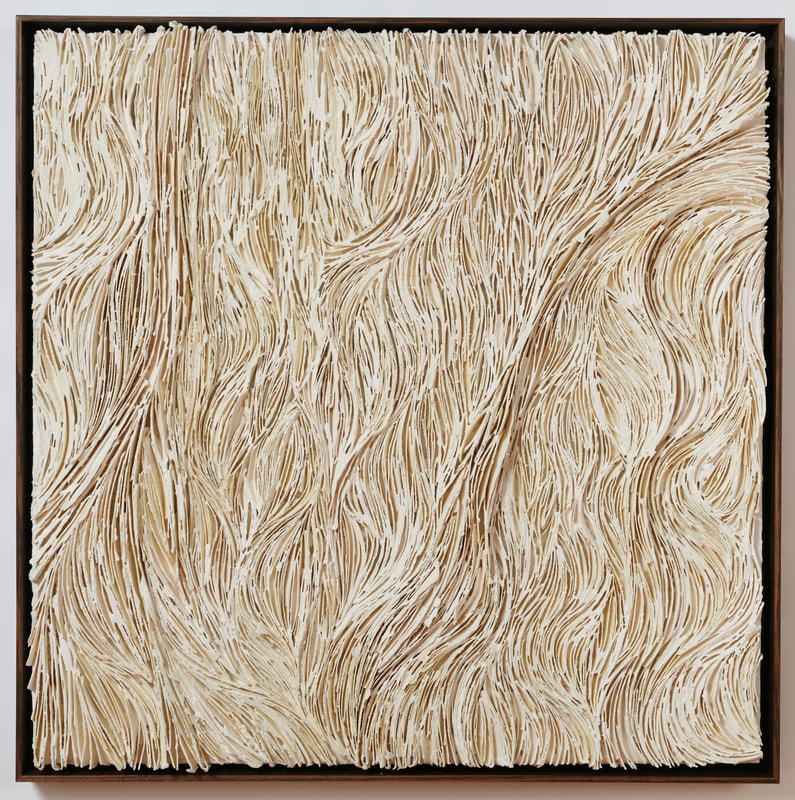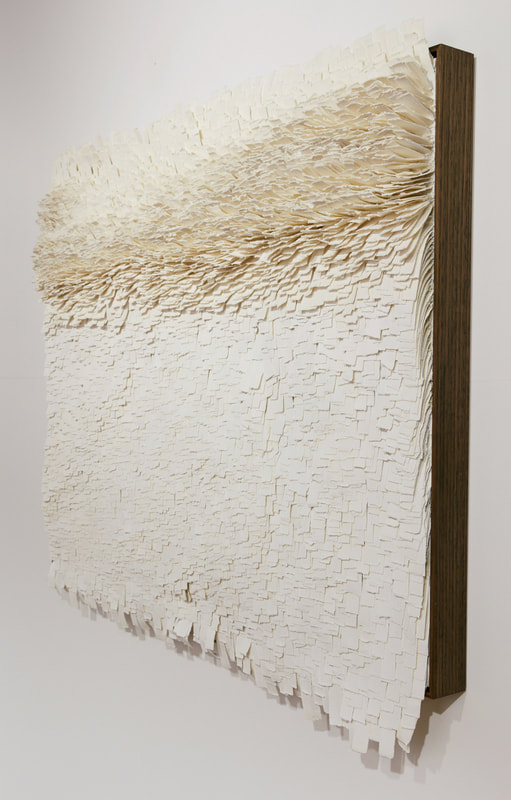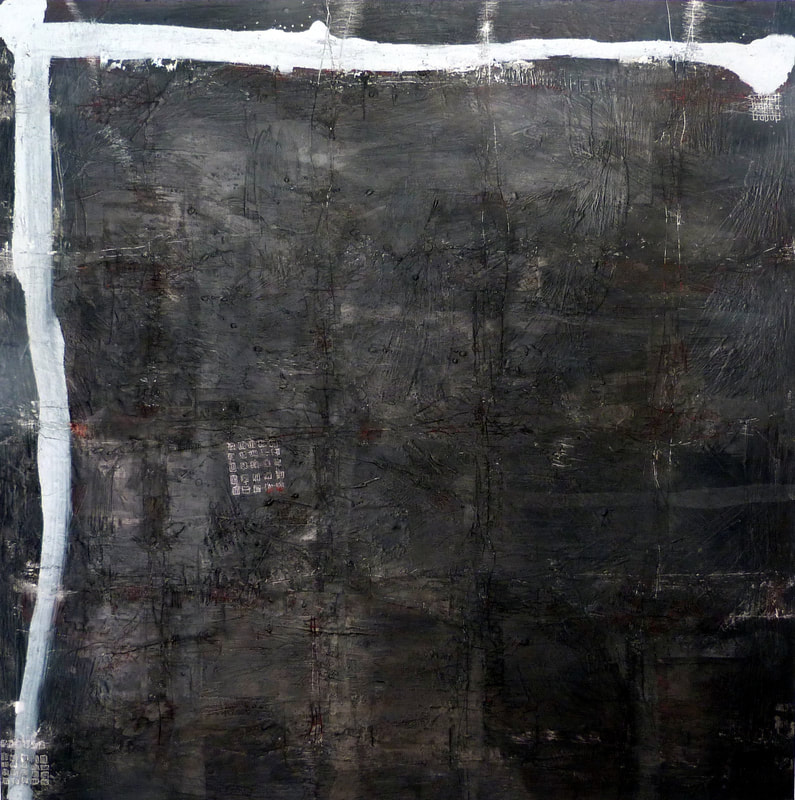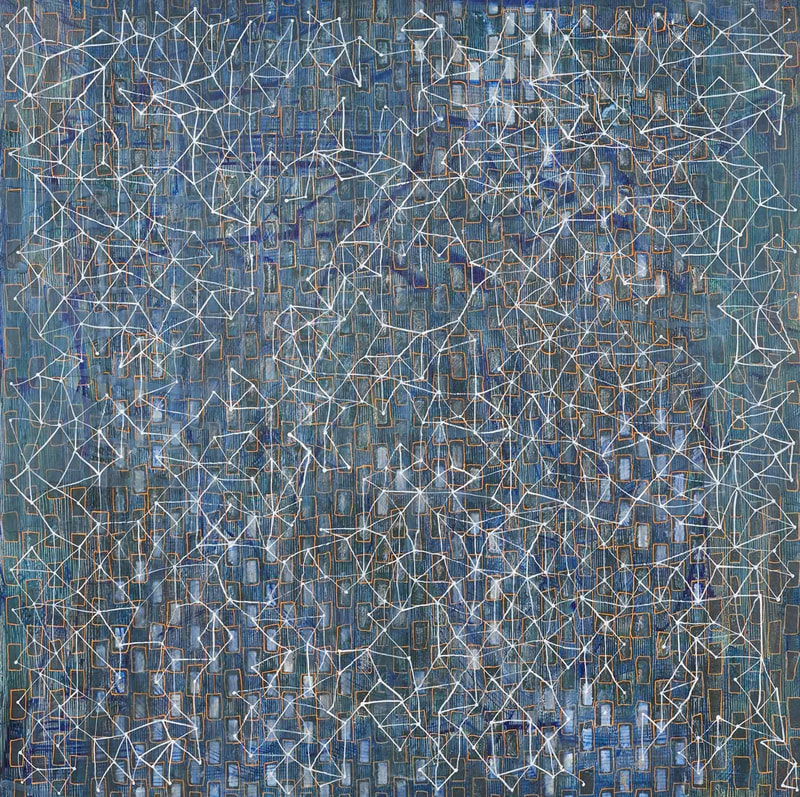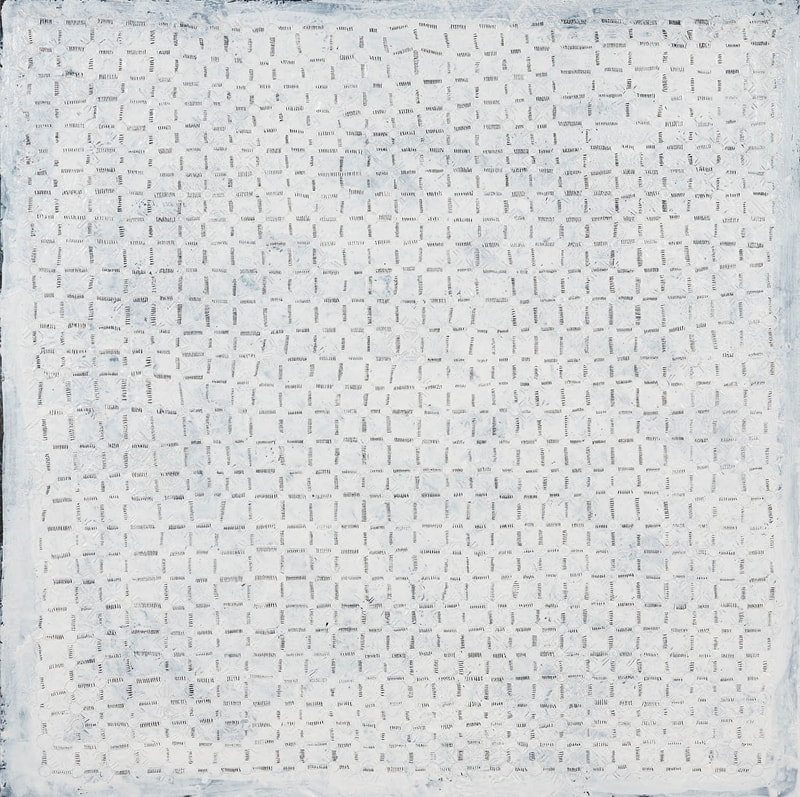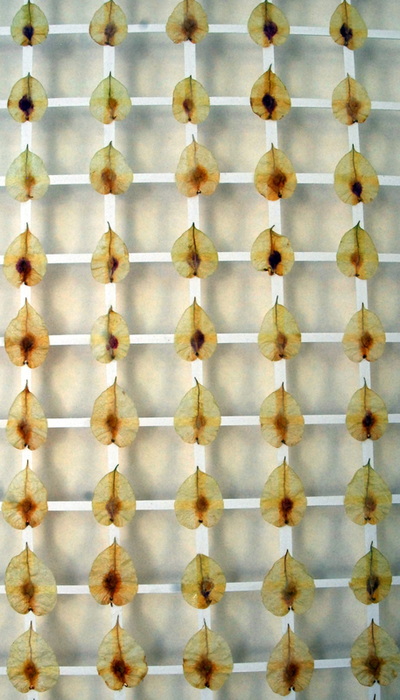Darkness is about to pass encaustic and watercolour on hand ripped paper on board
Keeping Time solo exhibition www.egganddartgallery.com.au
Egg & Dart, Shop 2, 175 Keira St, Wollongong, NSW, 2500 | [email protected]
Keeping Time solo exhibition www.egganddartgallery.com.au
Egg & Dart, Shop 2, 175 Keira St, Wollongong, NSW, 2500 | [email protected]

Counting the Dead watercolour and Encaustic on hand cut paper Each piece is the name of a woman killed by domestic violence in 2021 and
2022.
2022.
The Past is a Curious Creature
Ripped paper on constructed paper box
@45 x 60 x 45 cm
Ripped paper on constructed paper box
@45 x 60 x 45 cm
The Tenderness of Rain
Encaustic, oil and watercolour on rice paper on board 85 x85 cm
At this Point in Time The Egg and Dart Gallery Thirroul www.egganddartgallery.com
Encaustic, oil and watercolour on rice paper on board 85 x85 cm
At this Point in Time The Egg and Dart Gallery Thirroul www.egganddartgallery.com

Beyond Encaustic, ink and graphite watercolour on Board 100 x 100cms
Finalist Now Shoahaven Regional GalleryContemporary Art Prize
Finalist Now Shoahaven Regional GalleryContemporary Art Prize
Shadows Hold their Breath Encaustic, oil, ink and graphite watercolour on board 100 x 100cms
Regeneration www.egganddart.com.au
Lee Bethel’s new paintings have a worked, essential quality. She uses the grid as a lens through which we might track a complex surface. It is pulled into legibility, scoured back and redefined. It disappears and is then reapplied via stencil, playing with inversion and emergence. Bethel uses a dual method: the erosion of the surface through time, bound by the precision of vertical and horizontal lines. She buries and then reconnects with the grid, acknowledging its capacity for order but pressing and scumbling it away. This duality becomes a strategy to interpret the densities of her paintings. It is a rich complexity that we sink into as viewers.
The writer Rosalind Krauss regarded the grid as an identifying format of modernism. It brought order and removed the decorative. It acknowledged sequencing and therefore time, movement and the appearance of cinema. And while it might be a sign of modernity, the grid appears unexpectedly through art history. A 14th century BC Egyptian painting used it to describe the layout of the Gardens of Amun. In Renaissance Italy, Alberti used a “veil” on a window to transcribe the scene beyond. Albrecht Dürer then constructed a wooden frame with a net of black threads through which to view a painting subject. Drawings of Manhattan Island from the early 19th century overlay a proposed New York plan on the existing landform. In all instances the grid is used to organise space and to quantify it. Lee Bethel uses the device to explore the impossibilities of this desire for order.
The new paintings on board are a deliberate departure from Bethel’s recent seed assemblages although her materials remain fundamental: beeswax prepared in sunlight with watercolour rubbed over the wax; blue biro pen scrawls that bring a more deliberate mark of the hand. Lee Bethel has been a finalist in numerous prizes including the Sulman and the Hazelhurst Art of Paper Prize. This exhibition marks a move to painting but the sensibility that remains essentially Bethel: a restrained palette with contemplative and material-rich surfaces.
-Melody Willis
The writer Rosalind Krauss regarded the grid as an identifying format of modernism. It brought order and removed the decorative. It acknowledged sequencing and therefore time, movement and the appearance of cinema. And while it might be a sign of modernity, the grid appears unexpectedly through art history. A 14th century BC Egyptian painting used it to describe the layout of the Gardens of Amun. In Renaissance Italy, Alberti used a “veil” on a window to transcribe the scene beyond. Albrecht Dürer then constructed a wooden frame with a net of black threads through which to view a painting subject. Drawings of Manhattan Island from the early 19th century overlay a proposed New York plan on the existing landform. In all instances the grid is used to organise space and to quantify it. Lee Bethel uses the device to explore the impossibilities of this desire for order.
The new paintings on board are a deliberate departure from Bethel’s recent seed assemblages although her materials remain fundamental: beeswax prepared in sunlight with watercolour rubbed over the wax; blue biro pen scrawls that bring a more deliberate mark of the hand. Lee Bethel has been a finalist in numerous prizes including the Sulman and the Hazelhurst Art of Paper Prize. This exhibition marks a move to painting but the sensibility that remains essentially Bethel: a restrained palette with contemplative and material-rich surfaces.
-Melody Willis
Bell Jars from Flourish exhibition at www.egganddart.com.au
Images from Flourish exhibition. Works available from www.egganddart.com.au
Floreo Seeds and rust on hand cut and folded paper on board 20 x 20 cms
Paradeisos Encaustic, seeds and rust on hand cut paper on board 20 x 20 cms
Parterre Encaustic and seeds on hand cut paper on board
Bloom Encaustic, watercolour and seeds on hand cut and folded paper on board 20 x 20 cms
Operculum Seeds and watercolour on hand cut paper 1000 x 76cms
Finalist Paramor Contemporary Art Price 2017
Finalist Paramor Contemporary Art Price 2017






